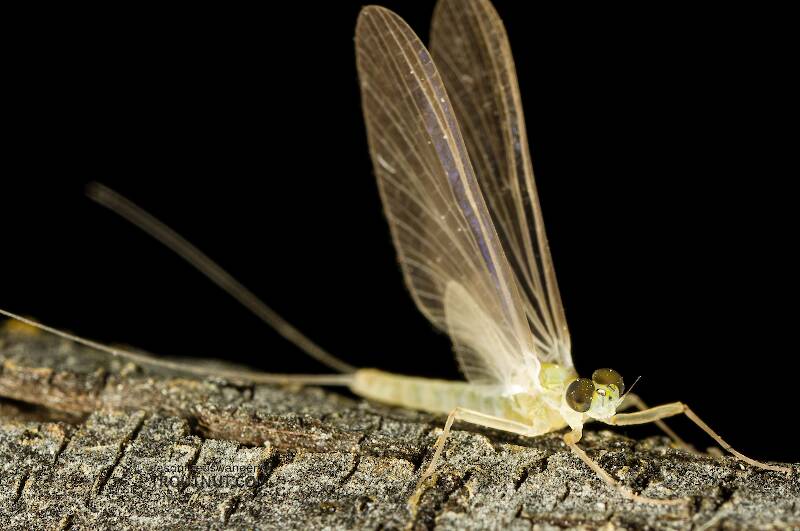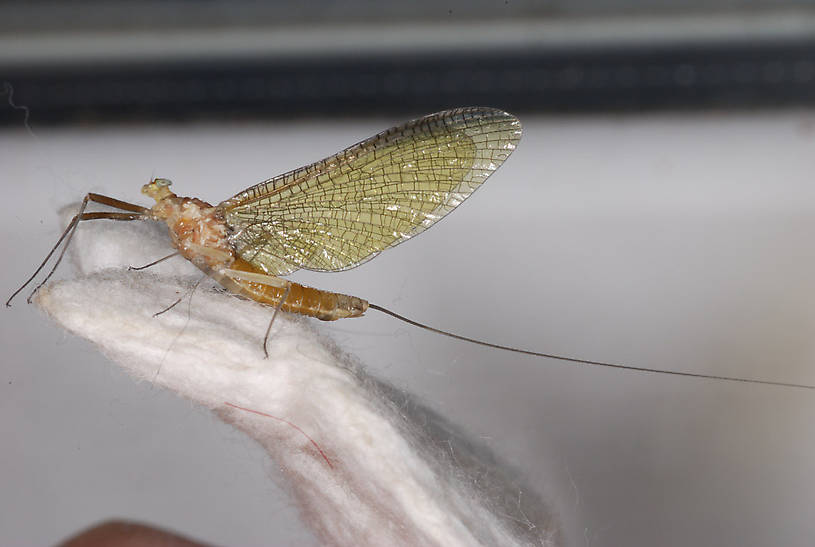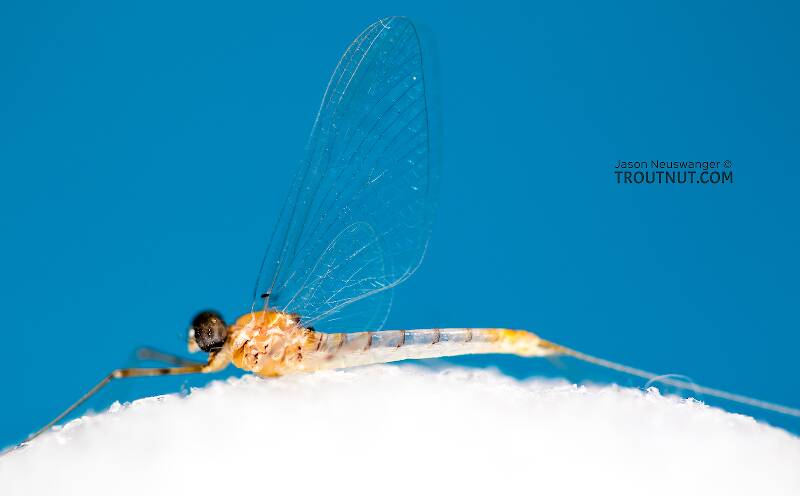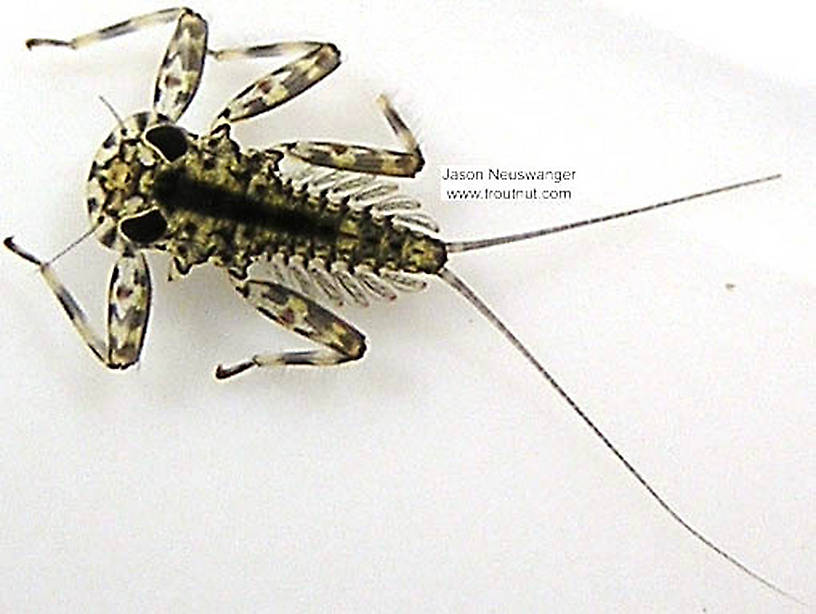
Blue-winged Olives
Baetis
Tiny Baetis mayflies are perhaps the most commonly encountered and imitated by anglers on all American trout streams due to their great abundance, widespread distribution, and trout-friendly emergence habits.
Featured on the forum

This specimen keys to the Epeorus albertae group of species. Of the five species in that group, the two known in Washington state are Epeorus albertae and Epeorus dulciana. Of the two, albertae has been collected in vastly more locations in Washington than dulciana, suggesting it is far more common. On that basis alone I'm tentatively putting this nymph in albertae, with the large caveat that there's no real information to rule out dulciana.

Troutnut is a project started in 2003 by salmonid ecologist Jason "Troutnut" Neuswanger to help anglers and
fly tyers unabashedly embrace the entomological side of the sport. Learn more about Troutnut or
support the project for an enhanced experience here.
Slate Maroon Drakes
Like most common names,"Slate Maroon Drake" can refer to more than one taxon. They're previewed below, along with 4 specimens. For more detail click through to the scientific names.
Mayfly Genus Epeorus
These are sometimes called Slate Maroon Drakes.
There is remarkable variety of form and color within this prolific genus of fast-water mayflies. Different species are found across the country, and several cause good hatches. Fly anglers are likely to encounter the lesser species on occasion, too.
The best Epeorus hatch in the East is Epeorus pleuralis, the famous Quill Gordon, the first abundant large mayfly hatch of the year. Epeorus vitreus comes a little later and is important in both the East and Midwest.
In the West, Epeorus longimanus dominates in fast, high-altitude streams, while Epeorus albertae inhabits slower and lower waters.
The best Epeorus hatch in the East is Epeorus pleuralis, the famous Quill Gordon, the first abundant large mayfly hatch of the year. Epeorus vitreus comes a little later and is important in both the East and Midwest.
In the West, Epeorus longimanus dominates in fast, high-altitude streams, while Epeorus albertae inhabits slower and lower waters.

The lack of a darkened humeral crossvein rules out Epeorus albertae and Epeorus dulciana. The lack of a dark macula on the forefemora rules out Epeorus longimanus. The small size rules out Epeorus grandis and Epeorus permagnus. That leaves as the only possibility known in Washington state Epeorus deceptivus. It is a small species, although not reportedly quite as small as this specimen. I couldn't find anything in the species description in Traver (1935) to definitively confirm or rule out the species ID, given that I don't have the preserved specimen to check under a microscope, but it has to be either deceptivus or something not yet reported in Washington.
It was collected at the same time as a similar-sized female dun.
It was collected at the same time as a similar-sized female dun.
See 55 more specimens...
Mayfly Species Ironodes nitidus
These are sometimes called Slate Maroon Drakes.
This large, relatively uncommon Western mayfly may produce short fishable hatches. Ernest Schwiebert remarked in Matching the Hatch about its unique appearance:
This large dark mayfly is one of the most unusually colored insects to hatch on Western streams, for its sternites are a reddish maroon.

While relatively rare in most of western Montana, it is common in several small streams along the east side of Flathead Lake and streams on the south side of the Flathead Indian Reservation.
References
- Schwiebert, Ernest G. 1955. Matching the Hatch. MacMillan Publishing Company.



